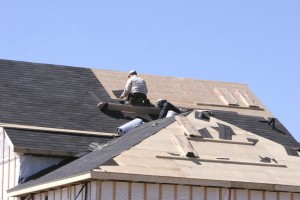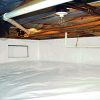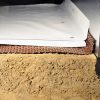 Decisions. Decisions. That’s what you face when doing just about any home improvement, especially complex jobs like reroofing your home. Each decision can make a big difference with regard to how much the job will cost in both the near and long term. With a roofing job, there are several decisions you should make even before you hire a contractor or choose a shingle manufacturer. The first is whether to simply patch leaks and damaged areas or whether partial or complete reroofing is called for. If you choose the latter, you’ll also have to decide whether to roof over your existing roof or to remove it prior to reroofing. Each decision will have cost consequences.
Decisions. Decisions. That’s what you face when doing just about any home improvement, especially complex jobs like reroofing your home. Each decision can make a big difference with regard to how much the job will cost in both the near and long term. With a roofing job, there are several decisions you should make even before you hire a contractor or choose a shingle manufacturer. The first is whether to simply patch leaks and damaged areas or whether partial or complete reroofing is called for. If you choose the latter, you’ll also have to decide whether to roof over your existing roof or to remove it prior to reroofing. Each decision will have cost consequences.
Repair or replace
Replacing a half dozen shingles due to wind damage or a fallen limb is a relatively easy and inexpensive repair. The downside is that unless your roof is relatively new and you saved some spare shingles from the job, the patch may not match the rest of the roof. That’s, however, a small price to pay if it means you’ll be able to live with your current roof for another 10 or 15 years!
If the damage is more significant but limited to one side of the roof, partial reroofing is an option. It will cost thousands of dollars less than a full reroofing. Repairing a section of roofing will also make it easier to blend new with old because slight color differences will be less noticeable. But partial reroofing jobs are more expensive on a cost per square (a 10 x 10-ft. area) basis. They can create addition problems, too. For example, if an asphalt roof already has 2 or more layers, all layers will have to be removed. In addition to added labor and disposal costs, this may create a lopsided effect at ridges where the old roof will end up being a couple of inches higher than the new one. Even when built up with a course of shingles and covered with a ridge cap, the hump may be noticeable.
If your roof is approaching its rated life expectancy and you’re faced with reroofing half of it because of damage, you should consider doing the entire job while the crew is there with its scaffolding, ladders, and equipment. It will likely be less expensive than doing one part now and having the contractor return in a few years to replace the rest.
When to reroof depends upon several variables, including roof shingle wear and age, climate, and susceptibility to future damage. In my own case, I had patched the roof when hurricane Irene blew off about 6 or 7 shingles in 2011. The replacement shingles were off the rack at the home center and light weight, but they matched the existing three-tab style, were somewhat close in color, and saved me from having to buy an entire bundle of shingles. We added a few dabs of extra roofing cement under the patching shingles and hoped for the best. The entire job cost $160.
A little over a year later, hurricane Sandy blew away several dozen shingles on the same face of the roof (not the previously patched areas though!). Reroofing with a more durable shingle that comes with vastly improved adhesives to keep shingles secure had a lot of appeal and contributed to my decision to do the entire job at once. The fact that the new shingles would have 6 nails per shingle instead of four, as now recommended by the shingle manufacturer for high wind areas, was also an incentive.
Tear off or roof over?
Once you’ve decided to reroof, you’ll have to decide whether to install your new roof over the existing one or whether to tear the old one off. Once again, the choice comes down to whether you want to save a little money now and risk greater expenses down the road — or to spend more now and minimize future expenses.
If you already have two layers of asphalt shingles on your home, your decision is made for you. The International Residential Code (R907.3), and most of the municipalities that have adopted it, says that you cannot put a new roof over two or more applications of any type of roof covering. Nor can you put a new roof over an old one if the existing roof is water-soaked or has deteriorated to the point where it is not an adequate base for additional roofing. You can’t put a new roof over wood shake, slate, clay, cement or asbestos-cement tile, either.
If you have only one layer of asphalt shingles, you may decide to have them removed even though you’re not required to. Doing so may save you money in the future. For example, if you live in an area that is subject to high winds, keep in mind that shingles will hold better if fastened directly to the roof deck without an intervening layer of shingles. In fact, that’s how shingle testing is done.
In addition, removing the old shingles will allow you to inspect the roof deck or sheathing. You’ll be able to check for rot and for inadequate sheathing fasteners. By making any necessary repairs and adding fasteners to sheathing (especially annular nails or screws), you will avoid the dramatic losses caused when sheathing blows off the roof in a storm and allows rain to cause extensive interior damage throughout your home. In addition, by beginning your roofing job with a clean roof deck (old shingles and roofing felt removed), you have the option of adding ice and water shield membrane along the eaves. It will help prevent damage due to ice dams.
A new roof is a big expense but should last you for decades. Do it right and you’ll have one less thing to worry about when storm winds blow. In the long term, you’ll also end up with more money in your pocket.






